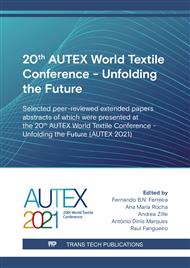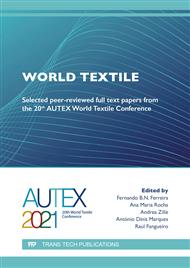p.81
p.89
p.99
p.113
p.121
p.131
p.139
p.149
p.155
Circular Business Models and Textile Waste: Riopele Case Study in Portugal
Abstract:
The circular economy has been an emerging theme in the strategic decisions of different industrial sectors as an alternative to reducing the negative impact generated by the linear economy that extracts, transforms, uses, and discards our planet's resources without a second chance for reuse. In this way, most industrial sectors are looking for new business models based on circularity that can reduce the effects generated by the residues of their production processes and that can cause serious damage in the environmental, social, cultural, and economic. In the textile sector, issues related to waste management become even more evident, due to the relevance of this segment in the world economy and the extension of its production chain. In this context, the main objective of the article is to assess the potential and challenges of the Portuguese textile industry in the implementation of business models based on the circular economy for the reuse of textile waste. In the first phase, the work was carried out through systematic research of literature review in current indexed studies to investigate the theme of circular business models. In the second moment, qualitative research was carried out based on a case study in the textile industry RioPele in Portugal. Data collection took place through semi-structured interviews, in loco, in January 2020 with the managers responsible for the company's sustainability department. The results indicate as potential the fact that the company already integrates sustainability into its corporate values, applies circularity in the development of new products, is supported by class institutions, research centers and universities and recognizes this collaboration as a decisive factor for the success of its business model focused on waste reuse. However, it points out as a difficulty the still high costs for the transition to the circular economy and the need for more effective communication actions to share the principles of circularity and generate greater awareness in its customers and other stakeholders. The results of the investigation can help other industries in the textile segment to realize the advantages of reusing their waste for a more circular textile economy with strong brands that can generate positive impacts on society.
Info:
Periodical:
Pages:
121-130
Citation:
Online since:
July 2022
Price:
Сopyright:
© 2022 Trans Tech Publications Ltd. All Rights Reserved
Share:
Citation:



